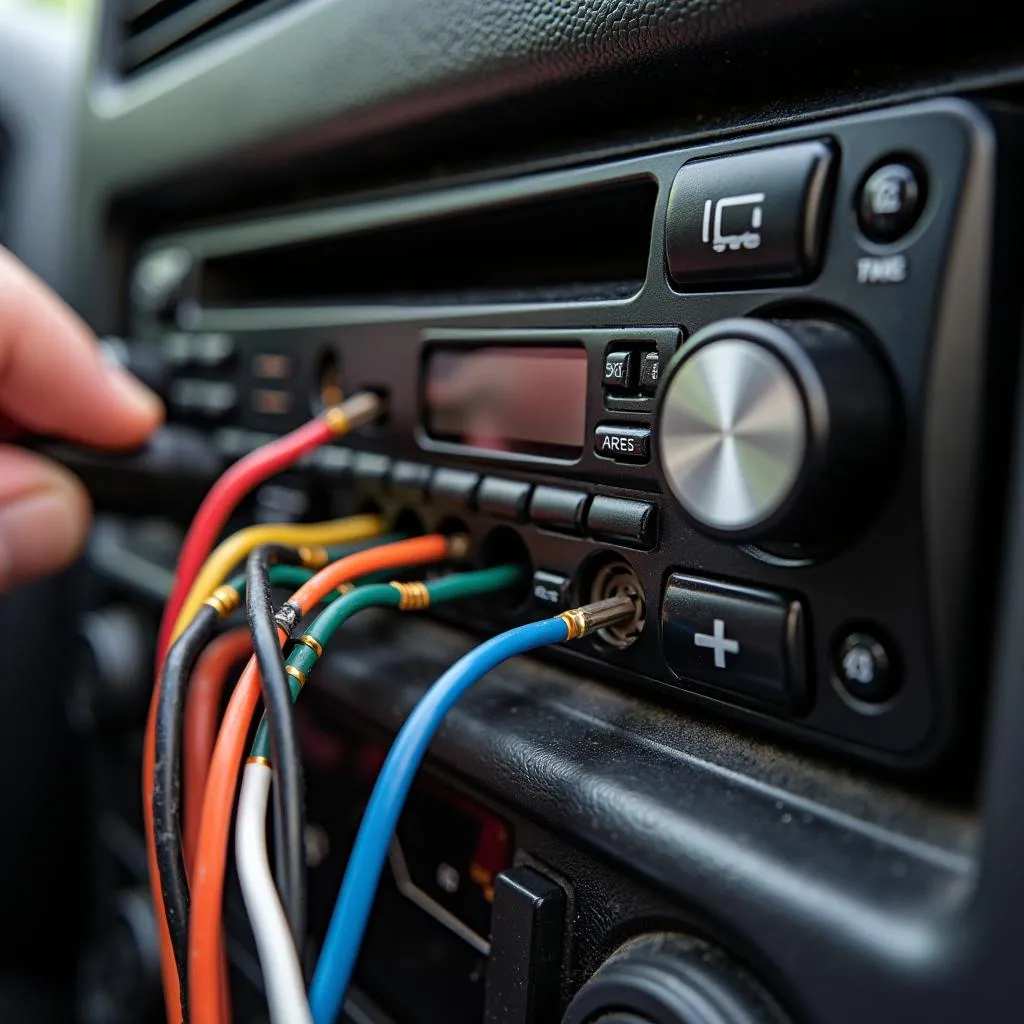The brake pad warning light on your VW Golf is an important safety feature that lets you know when your brake pads are wearing thin and need to be replaced. While this light is crucial for your safety, it can be frustrating if it appears after you’ve already replaced the brake pads. In this article, we will guide you through the process of resetting the brake pad warning light on your VW Golf, and explain why it’s important to address this issue promptly.
Understanding Your VW Golf’s Brake Pad Warning System
Your VW Golf, like many modern vehicles, is equipped with a wear sensor integrated into the brake pads. This sensor is a small metal tab strategically placed to come into contact with the brake rotor when the brake pad material wears down to a critical level. When this contact occurs, it completes an electrical circuit, triggering the brake pad warning light on your dashboard.
It’s important to note that the warning light doesn’t always mean the brake pads are completely worn out. It simply serves as an early alert system. However, once the light is illuminated, it’s crucial to inspect your brake pads as soon as possible.
Common Reasons for a VW Golf Brake Pad Warning Light Reset
The most common reason for resetting the brake pad warning light is after a brake pad replacement. However, there are instances where the light might illuminate prematurely or even after a reset. Here are some additional reasons why you might need to reset the brake pad warning light on your VW Golf:
- Faulty Brake Pad Sensor: Like any electrical component, the brake pad wear sensor can malfunction. A break in the sensor wire or a faulty connection can trigger the warning light even if the brake pads are in good condition.
- Loose Brake Pad Sensor Wire: Over time, the sensor wire can become loose or disconnected due to vibrations or accidental snags during routine maintenance.
- Incorrect Brake Pad Installation: If the brake pads are not installed correctly, the sensor may not be positioned properly, leading to a false warning.
Resetting the VW Golf Brake Pad Warning Light: Step-by-Step Guide
Before attempting to reset the brake pad warning light on your VW Golf, it’s crucial to ensure that the brake pads are indeed in good condition or have been replaced with new ones. If the warning light is on due to worn brake pads, resetting the light without addressing the underlying issue will compromise your safety.
Here’s a step-by-step guide to help you reset the brake pad warning light:
-
Locate the Service Reset Button: In most VW Golf models, the service reset button is located on the instrument cluster, typically near the speedometer or tachometer. It’s often identified by a wrench or a speedometer symbol.
-
Turn the Ignition On: Turn the ignition to the “on” position but do not start the engine.
-
Press and Hold the Reset Button: Press and hold the service reset button. You might need to hold it for a few seconds until a message or symbol appears on the instrument cluster display.
-
Follow the On-Screen Prompts: The instrument cluster display might show a series of prompts or symbols. Use the reset button or other designated buttons (refer to your owner’s manual) to navigate through the prompts and select the option to reset the brake pad warning light.
-
Confirm the Reset: Once you’ve selected the reset option, the instrument cluster might ask you to confirm the reset. Follow the on-screen instructions to confirm.
-
Verify the Reset: After completing the reset process, turn the ignition off and then back on to check if the brake pad warning light has been successfully reset.
Note: If you’re uncomfortable performing these steps yourself or if the warning light persists after attempting the reset, it’s highly recommended to consult a qualified mechanic or your VW dealership for assistance.
When Professional Help is Necessary
While resetting the brake pad warning light on your VW Golf might seem straightforward, certain situations warrant the expertise of a professional. Consider seeking professional assistance in the following scenarios:
-
Persistent Warning Light: If the warning light persists even after you’ve replaced the brake pads and attempted the reset procedure, it indicates a potential underlying issue, such as a faulty sensor or wiring problem, that requires diagnosis and repair.
-
Uncertainty or Difficulty: If you’re unsure about any step of the reset process or encounter difficulties while attempting it, it’s always best to err on the side of caution and seek professional guidance.
Tips for Maintaining Your VW Golf’s Brakes
Maintaining your VW Golf’s brakes in good working condition is paramount for your safety and the longevity of your vehicle. Here are some helpful tips:
- Regular Brake Inspections: Have your brakes inspected by a qualified mechanic at least once a year or every 10,000 miles.
- Quality Brake Pads: When it’s time to replace your brake pads, opt for high-quality brake pads from reputable brands.
- Brake Fluid Flush: Have your brake fluid flushed and replaced according to your VW Golf’s recommended maintenance schedule.
Conclusion
The brake pad warning light on your VW Golf is a crucial safety feature designed to alert you about potential brake pad wear. Understanding its function and knowing how to reset it after a brake pad replacement or in case of a minor glitch can save you time and potential headaches. However, always prioritize your safety and seek professional assistance if you encounter any persistent issues or are unsure about any aspect of brake maintenance.



